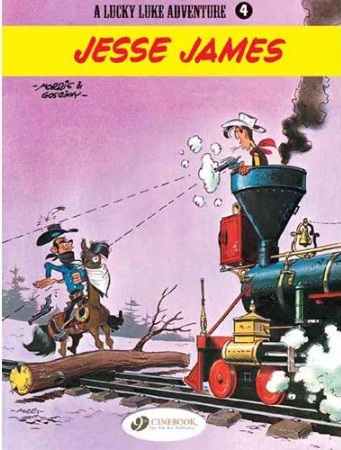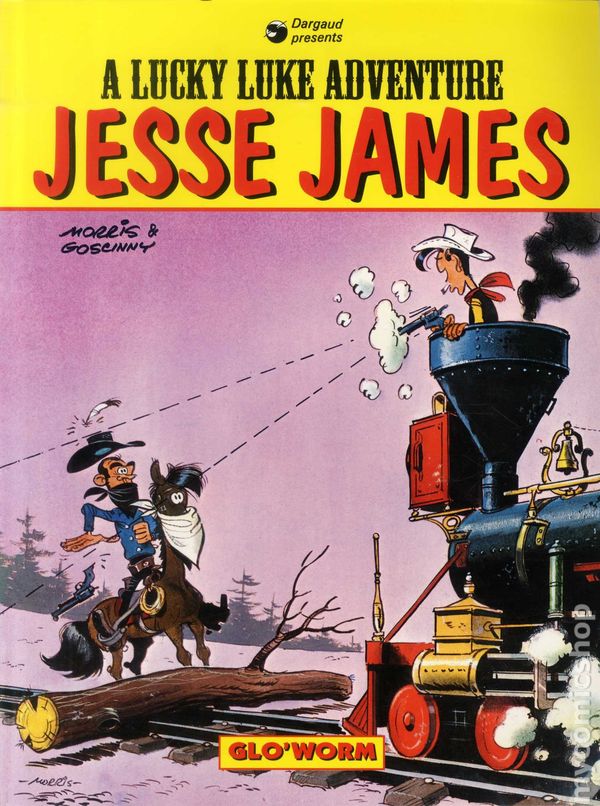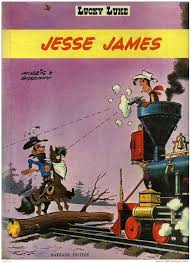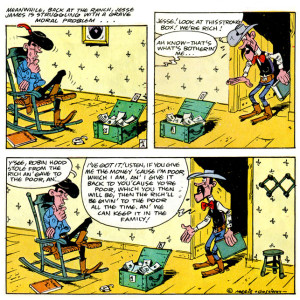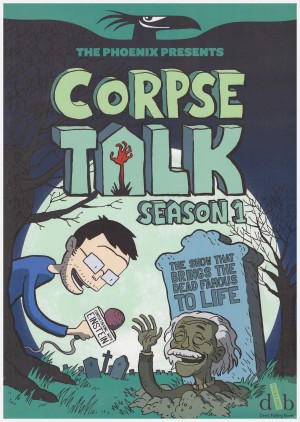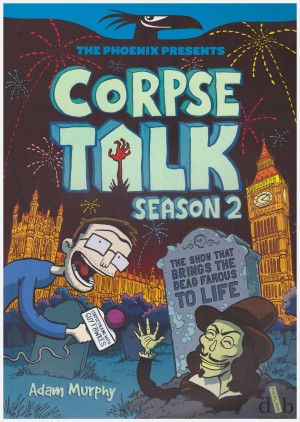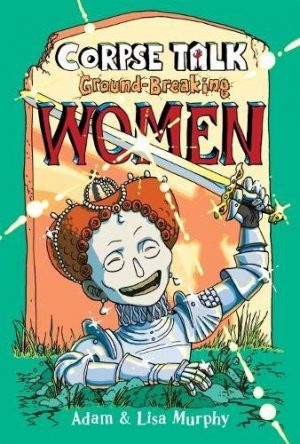Review by Jamie McNeil
Lucky Luke featured more than a few historical figures and events over the years and his thirty-fifth outing saw the turn of legendary outlaw Jesse James and the notorious James-Younger Gang.
Jesse James and his gang decide that things have become too hot for them, and the solution is to head down to Texas where they aren’t wanted. The Pinkerton Detective Agency hires Luke to chase Jesse, his brother Frank and cousin Cole out of the Lone Star State and into the open arms of the Pinkertons. The trouble is that Jesse, Frank and Cole are such likeable fellows who have endeared themselves to the residents of Nothing Gulch. So while they are definitely up to no good, Luke may not be able to do anything about it.
While Morris later produced some good tales with others, the best Lucky Luke stories were without a doubt produced when René Goscinny was the writer. There was a consistent dynamism to their work that homaged the romanticism of the Wild West, but lovingly skewered it at the same time. Part of Jesse James’ genuine appeal to the masses, and why the Pinkertons had difficulty capturing him, was because he was an Ex-Confederate soldier who related well to the common folk. He did believe himself to be a Robin Hood figure, although there is no evidence the gang shared their takings with anyone other than themselves. Goscinny plays on this and their folk legend status to squeeze out a ton of humour, satirising the human response to crises, how a copper always seems to stick out like a sore thumb, and how people justify their actions to suit themselves.
Jesse and Frank James historically viewed themselves as intellectuals, Frank having a love for Shakespeare he acquired from his father’s books while Jesse viewed himself as a philosopher of sorts. Goscinny has Frank spouting Shakespeare with a comic’s timing, even funnier when blended with slapstick comedy. Morris’s cartooning is absolutely superb, using simple colours to amazing effect and illustrating characters that accentuate the depth Goscinny scripted them to have. His caricatures are simply brilliant, the James Gang’s resemblance to old photographs uncanny.
The partnership of Morris and Goscinny illustrates just how well Goscinny could work with others. This is as good as his Asterix work of the same period, though it is also completely different, illustrating what a diverse writer he was. In their official chronological output, Western Circus would be the next Lucky Luke book, but Cinebook follow it with In the Shadow of the Derricks.
